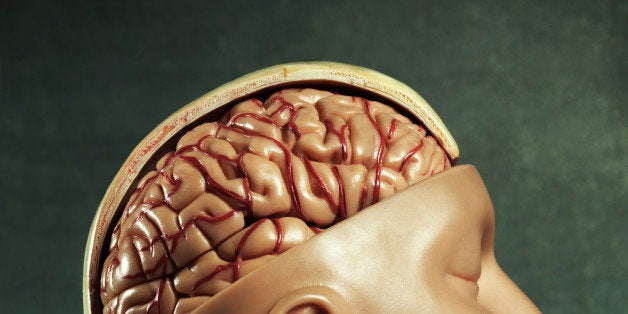
By Tanya Lewis, Staff Writer
Published: 11/10/2013 10:21 AM EST on LiveScience
A new technology that uses only light could one day detect and annihilate disease-causing proteins in the brain, researchers say.
The method involves using lasers to distinguish between normal brain tissue and the abnormal tissue found in people with Alzheimer's disease, Parkinson's disease and Creutzfeldt-Jakob disease (which is referred to as the human form of mad cow disease, although in most cases the two conditions are not related). The laser technique -- which has not yet been tested in animals -- might one day be able to treat people with these diseases, researchers report.
In diseases such as Alzheimer's, proteins form clumps known as amyloids, although the exact role the clumps may play in causing disease remains somewhat mysterious. [Living With Alzheimer's in the US (Infographic)]
Now, researchers say they have found a way to detect these amyloids and destroy them using concentrated beams of light.
"Using just a source laser, we can distinguish between proteins in the amyloid structure and those functioning properly," said study researcher Piotr Hanczyc, a biophysicist at the Chalmers University of Technology in Sweden.
The technique, detailed Nov. 3 in the journal Nature Photonics,relies on properties of the amyloids that cause them to absorb light. In experiments, the researchers shined a laser through a small sample of amyloid. The laser scanned the molecules as they flowed very slowly in the same direction as the beam, and a detector measured how much light was absorbed.
The researchers found that while healthy proteins are optically invisible -- meaning the laser light passes right through them -- the amyloids absorb some of the light.
The process resembles another method already used to detect these protein clumps, called photoacoustic tomography, which involves pulsing light at a tissue to make it expand and contract, generating a sound wave. A computer detects the sound wave and reconstructs an image of the tissue.
The advantage of using lasers rather than sound waves is that scientists can fine-tune the wavelength of light used. Whereas skin and other tissues absorb ultraviolet and visible light, burning them, they absorb less infrared light, resulting in less damage to healthy tissue.
Currently, the laser technique has been tested only in free-floating proteins, not in living animals -- that's the next step, Hanczyc told LiveScience. Later, pharmaceutical companies could investigate the technology's potential as a method for detecting and treating brain diseases, but that could take 15 years or more.
At this stage, "the discovery is really fundamental," Hanczyc said, but it could change researchers' thinking about how Alzheimer's and other diseases can be treated, he said.
In addition, the research has applications in nanotechnology. Using amyloids as a template, scientists could design new materials for LEDs or other electronics.
"We design these synthetic molecules," Hanczyc said, but "as always, we are a little bit late -- nature already found it out."
CORRECTION: A previous version of this article incorrectly described Creutzfeldt-Jakob disease. It has been corrected to reflect that the disease is not related to mad cow disease, though it's often referred to as the human version of such.
Follow Tanya Lewis on Twitter and Google+. Follow us @livescience, Facebook & Google+. Original article on LiveScience.